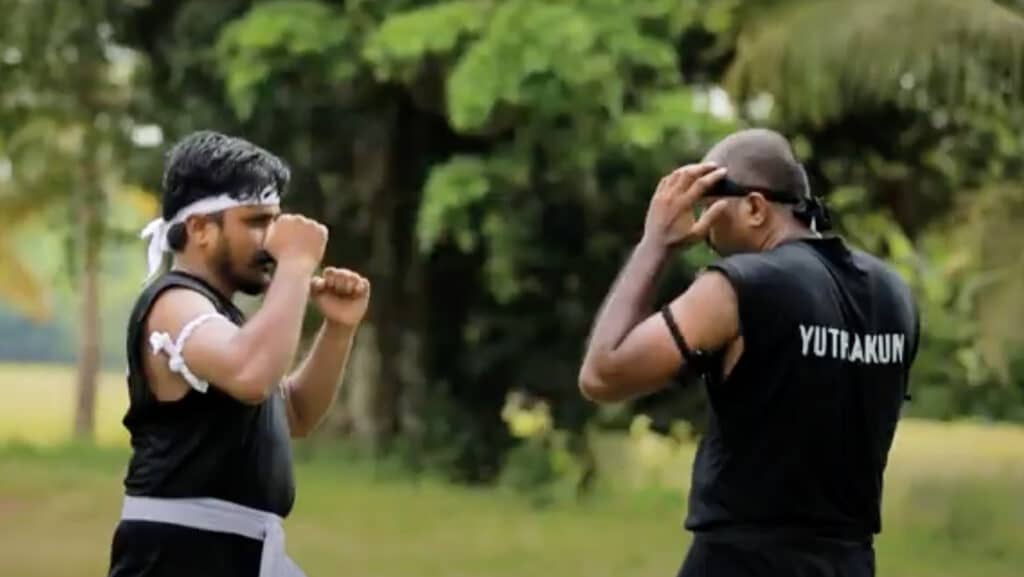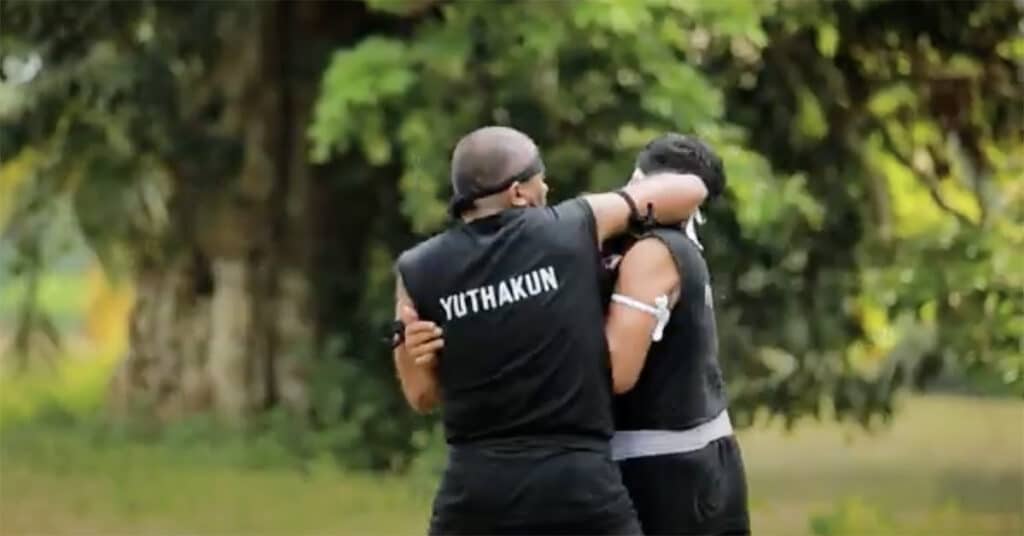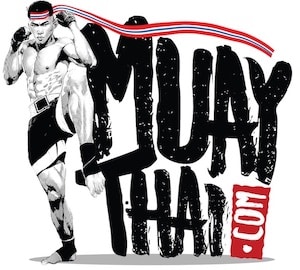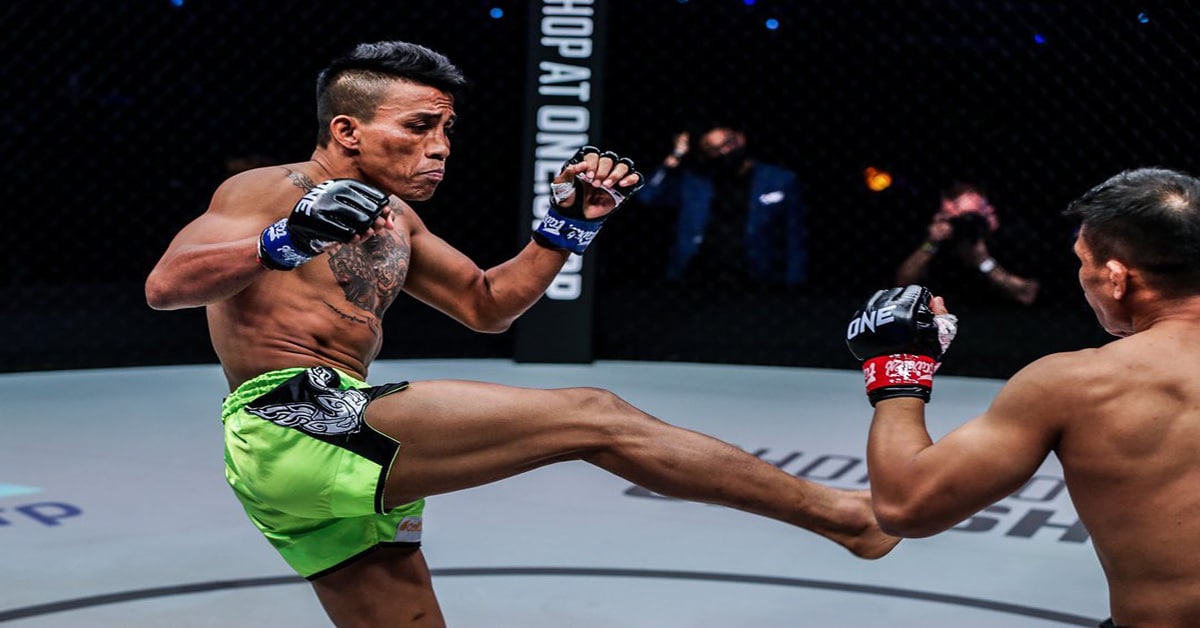Yutakhun Khom – An Ancient and Forgotten Martial Art of Cambodia
Yutakhun Khom is a martial art that has nearly been removed from existence. It persists today due to the determined efforts of its master. This is a dangerous and ancient Cambodian martial art that is designed to be deadly.
Yutakhun Khom is believed to have been practiced and perfected by Angkorian warriors. Unlike other martial arts, it not only emphasizes physical combat techniques but also integrates spiritual elements, often described as “magic”, into its practice. For generations, this martial art was passed down orally, ensuring its survival even during tumultuous times. However, despite its historical significance, Yutakhun Khom remained in the shadows for many years. Recent efforts are shining a light on its legacy for the nation of Cambodia.

What is Yutakhun Khom?
Yutakhun Khom is an ancient Cambodian martial art believed to have roots dating back thousands of years. The art combines deadly physical techniques, including kicks, elbow and knee strikes, with spiritual and “magical” practices designed to protect its practitioners in battle.
Origin
Yutakhun Khom is believed to have been practiced as far back as the Funan kingdom of Southeast Asia about 2,000 years ago. However, it was King Jayavarman VII, during the Khmer Angkorian empire nearly 1,000 years ago, who is credited with refining the philosophy and practices of Yutakhun Khom that continues to this day. After many battle victories, Jayarvarman gathered his top 36 warrior-masters and systematized the Khmer combat practices into a kampi, or manual.
Persecution and Preservation
The Khmer Rouge targeted and killed many practitioners of Yutakhun Khom, viewing them and their knowledge as threats. Only a few masters, like Chan Boeunthoeun, managed to survive by hiding and continuing their practices in secret. This period of Cambodian history was devastating for many traditional practices and cultural treasures.
Modern Revival
Currently, there are efforts to document, preserve, and popularize Yutakhun Khom. Chan Boeunthoeun, one of the few remaining masters, has been documenting his knowledge of the art in a bid to ensure its continuity and recognition as an important part of Cambodian heritage.
Yutakhun Khom vs. Bokator
Another ancient Cambodian martial art, Bokator has gained more international recognition in recent years, especially after being championed by Grandmaster San Kim Sean. There has been a push for it to receive a heritage listing with UNESCO.
There seems to be a contention between the proponents of the two martial arts. Chan Boeunthoeun posits that Bokator is merely the name of a weapon used in Yutakhun Khom, suggesting that Yutakhun Khom encompasses a wider range of techniques. Meanwhile, Grandmaster Kim Sean of Bokator claims his art has up to 10,000 techniques, and highlights the significant cultural elements it incorporates, such as the colored krama (scarf) representing skill levels.
The Cambodian martial arts community and cultural bodies appear to recognize both Yutakhun Khom and Bokator as integral parts of Cambodia’s martial heritage. There’s an ongoing debate, particularly regarding UNESCO’s recognition, on which martial art should be given more prominence on the global stage.
Unique Characteristics
Historically, Yutakhun Khom was seen as a lethal martial art. There were no rules, and matches could be to the death. This brutality led to the French colonizers developing a watered-down version known as Kun Khmer. This is the claim of Chan Bountheoun.
Bountheoun explained:
“In the old days, there were no rules – it was a fight to the death. They would prepare the coffins beforehand.”
Beyond physical techniques, Yutakhun Khom incorporates spiritual elements. Masters trace “invisible tattoos” on fighters’ foreheads, palms, and soles, believed to protect them in combat. This “magic” is considered a potent aspect of the art.
Practitioners use various weapons, including swords, lances, staves, and l’bo’katao (bamboo forearm guards), reminiscent of modern police batons.

The Future of Yutakhun Khom
With the current efforts in place and a new generation of fighters, like Chan Rothana, being trained in the techniques and philosophy of Yutakhun Khom, there is hope for a resurgence of this ancient martial art. There’s a belief that with proper promotion and understanding, Yutakhun Khom could achieve global recognition similar to other martial arts like Muay Thai.
Bouenthoeun is chronicling the history of Yutakhun Khom in an effort to preserve it.
“Yuthakun khom warriors belong to what would be described as a ‘knight’ class in Europe. The role of yutakhun khom is to protect Cambodia and so its secrets must be kept within this knight class.
“I think Bouenthoeun began writing his knowledge and gathering research for his book when bokator started getting all the UNESCO interest. He’s worried the full story will not get out and part of Cambodia, which has already suffered so much, will be lost forever.”
He is confident in the future of this martial art. He added:
“In the future, as people rediscover Yutakhun Khom, it will return to its former strength and will, like muay Thai, become world famous.”
Chan Rothana
Chan Rothana is a professional MMA fighter who competes in ONE Championship. Overall, this Cambodian-born athlete has put together a 7 – 5 record professionally since making his debut in 2014. His father, Chan Boeunthoeun, is a grandmaster of Yutakhun Khom. Chan Rothana competes using the style of Yutakhun Khom. His participation in high-profile competitions like ONE Championship helps bring attention to Yutakhun Khom and Cambodian martial arts in general.
Right now, the Grandmaster status of Yutakhun Khom can only be passed down from father to son. However, Chan Boeunthoeun explained that in rare moments a grandmaster status can be passed from one to another even if one is not his eldest son. When about this Chan Boeunthoeun said:
“This is something for Rothana to decide, when he becomes master.”
What is Bokotor?
Bokator is one of the oldest fighting systems in Cambodia, with its history tracing back more than a thousand years. The term “Bokator” is derived from “bok” meaning “to pound” and “tor” meaning “a lion,” thus it’s often referred to as “lion fighting style.”
Bokator almost faded into obscurity during the Khmer Rouge era when many of its practitioners were persecuted. After the Khmer Rouge regime, there were very few Bokator masters left, and the martial art was on the brink of being lost forever.
Efforts are being made to get Bokator recognized by UNESCO as an Intangible Cultural Heritage to further ensure its preservation and appreciation on the world stage. While it’s still not as widely recognized internationally as other martial arts, Bokator remains a treasured part of Cambodia.
The grandmaster of Bokotor San Kim Sean discussed his preservation and revival efforts in a interview with the Phnom Penh Post.
“There are up to 10,000 techniques in Bokator; it would be difficult to learn them all in a lifetime.
“I brought the colored krama into Bokator because the krama is so important to Khmer culture and the colors make easy for the students to see each other’s grade level. Although there were no colored kramas in the old days, in modern Bokator it is the best way to show your skill level, and the young people like that …
“Bokator and Yutakhun Khom are not mentioned at Angkor Wat, there are only the pictures on the walls, so we know the techniques.”
Kun Khmer
The origins of Kun Khmer can be traced back over a thousand years, with depictions of Khmer martial arts found on the bas-reliefs of ancient temples like Angkor Wat. These temples show warriors in combat poses, providing a visual history of Khmer martial arts.
Kun Khmer, often referred to simply as “Pradal Serey” in the Western world, is the traditional striking martial art of Cambodia. Kun Khmer emphasizes the use of punches, kicks, elbows, and knee strikes, making it a very comprehensive and versatile striking art. Fighters train rigorously to condition their bodies to deliver and also receive blows.
Kun Khmer is both a means of self-defense and a popular sport in Cambodia. It’s a significant draw for tourists, much like Muay Thai in Thailand. The sport has produced many national heroes and is a source of pride for many Cambodians.
Muay Boran
Muay Thai also has an ancient form of combat named Muay Boran. Muay Boran translates to “ancient boxing” in Thai. This fighting form was developed for self-defense and battlefield combat.
When looking at Muay Boran, Bokotor, and Yutakhun Khom; each art form integrates spiritual practices. Muay Boran fighters might have protective tattoos, Yutakhun Khom integrates “magic”, and Bokator involves symbolic gestures and scarves indicative of the fighter’s level.
All three martial arts encompass a wide range of techniques. While Bokator mimics animal movements, Muay Boran and Yutakhun Khom might share more in common when it comes to strikes, given the proximity and influence of the regions.
Final Thoughts
As Cambodia continues to rediscover and honor its rich cultural traditions, the significance of Yutakhun Khom matters more than ever. This ancient martial art has nearly been lost to time and conflict. It is a blend of combat techniques and spiritual practices. As efforts intensify to preserve and promote Yutakhun Khom on a global stage, it serves as a poignant reminder of the importance of safeguarding cultural heritage.

